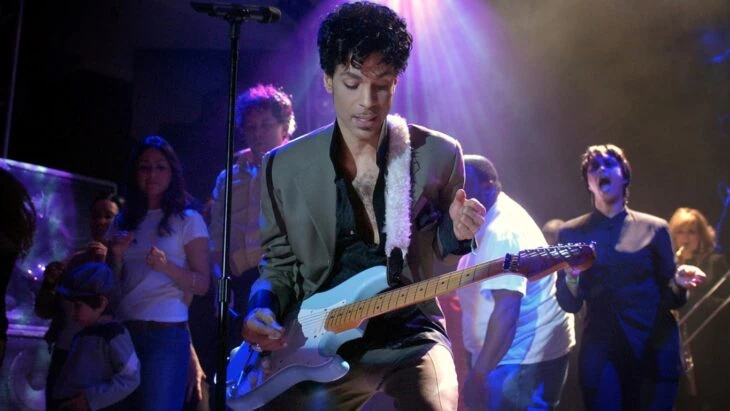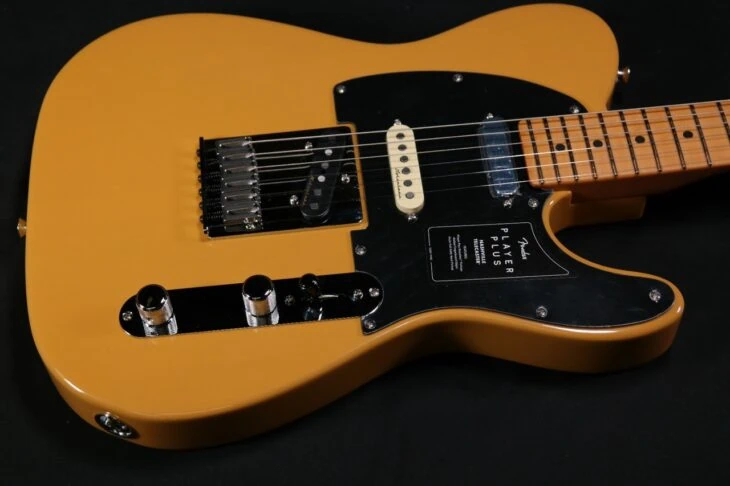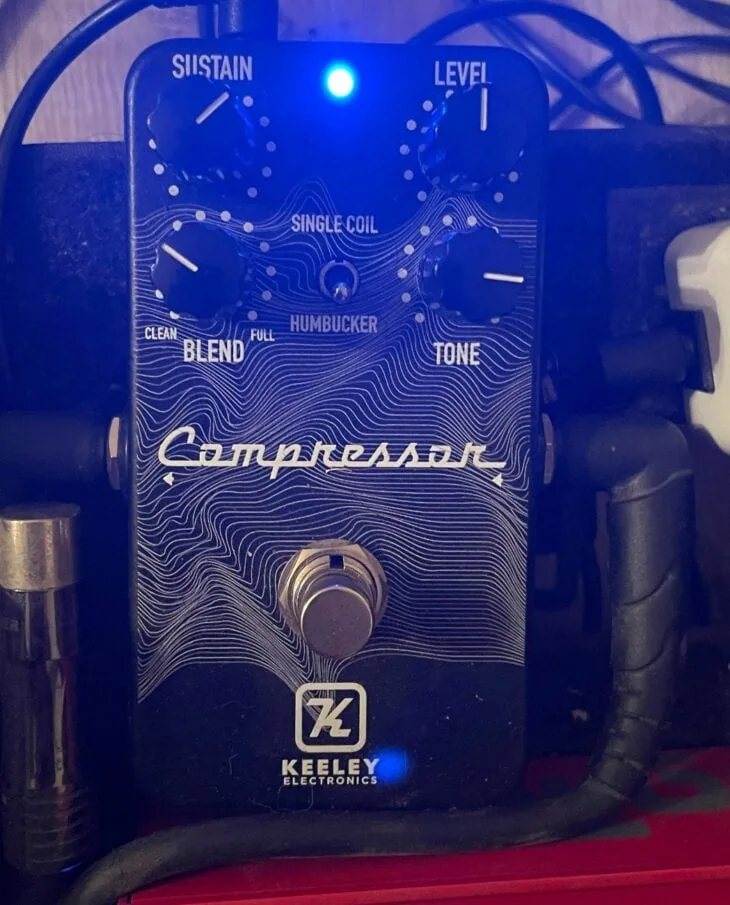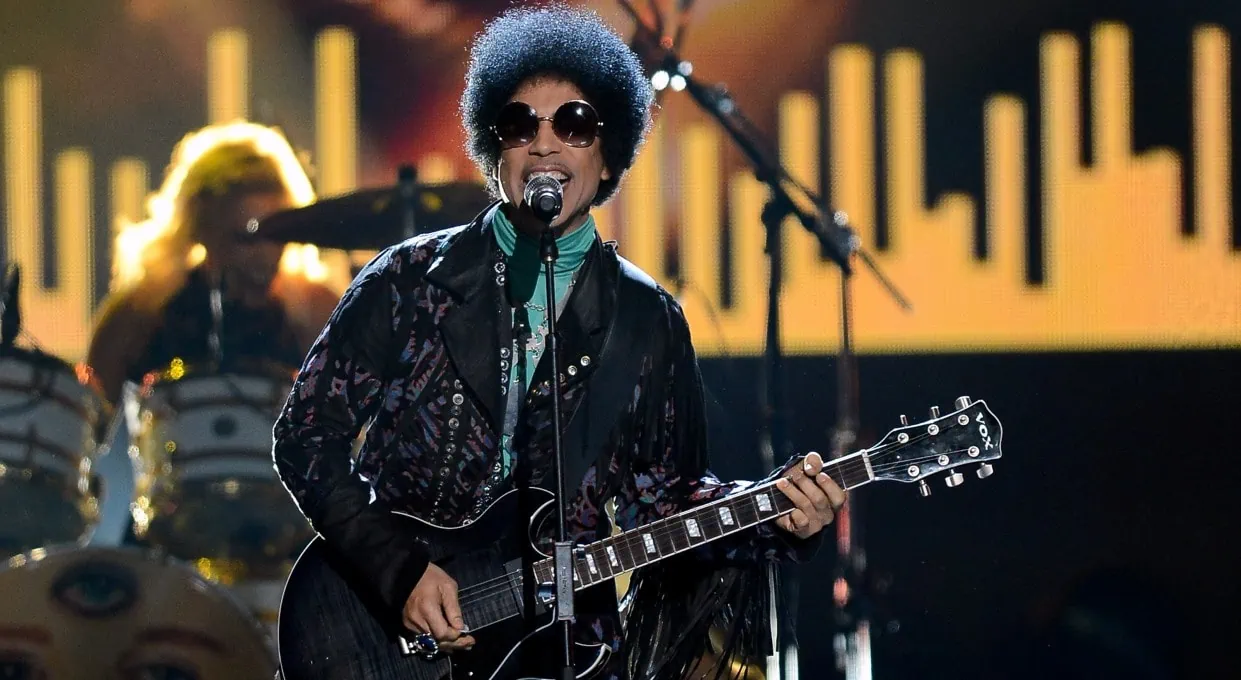The word “genius” is thrown around pretty liberally, but Prince might be the only contemporary artist to whom the term inarguably applies. Prince, on top of being a prodigiously gifted songwriter, was a virtuoso at just about every instrument on his records.
Although Prince produced, arranged, composed, and performed virtually all his tracks on his debut album, and boasted world-beating skills at just about every instrument he tried, he is perhaps best known for his otherworldly guitar skills.
Prince’s guitar playing, like his music, transcended genres. He was the type of musician to throw an 80s metal shred solo into a funk song, or break into an impromptu version of Radiohead’s “Creep” just because he could.
My favorite Prince video sees The Purple One unleashing an incandescent guitar solo at the end of “While My Guitar Gently Weeps” on a stage with world-class musicians including, among them, Tom Petty, Steve Winwood, and Jeff Lynne, all of whom simply watched Prince in awe.
In this article, I’ll go over the key pieces of gear necessary to evoke the Prince tone and the various amp settings you can use to channel some of his biggest hits.
Table of Contents
Prince Guitars

Prince is well known for his flamboyant sense of style, which extends to his taste in guitars. One of his best-known guitars was the Cloud guitar, as seen in the Purple Rain movie. He also played a “Love Symbol” guitar in the shape of the unpronounceable symbol that became Prince’s moniker in the 1990s.
One of Prince’s best-loved guitars was a Hohner Telecaster copy with an ash body. It was this guitar that he used to record the song “Purple Rain.” It featured modified DiMarzio pickups at first, but Prince later switched to Fender Noiseless pickups, then to Kinman. Critically, these pickups were voiced more in keeping with the Fender Stratocaster than the Telecaster, giving this guitar a unique sound.
I’d recommend employing an ash-bodied Tele as a starting point, or the Nashville Tele, which has a Strat-style pickup configuration.

Schecter actually makes an excellent Tele copy with an ash body and a Prince-esque purple finish, the PT Special.
The Fender Vintage Noiseless Pickups Prince used are an option as well if you want to try them, but they’re not an absolutely essential piece of the Prince tone.
Prince Amps
Prince’s preferred amplifier for most of his 80s heyday was a Mesa/Boogie Mark II.
He later enjoyed the services of Soldano amplifiers and Fender Bassman amps.
The clear takeaway here is that Prince appreciated an American-style amplifier.
Because this is quite a varied sound with plenty of effects, you’ll need an amp capable of handling a variety of pedals and effects units. Accordingly, my recommendation is the Fender Bassbreaker Combo.

Use this amp mostly on a clean setting as your starting point for Prince tones. Prince let his effects loop do most of the work, and consistently ran his amp clean.
Prince Amp Settings
In a catalog as versatile and varied as Prince’s, there’s an abundance of guitar tones that can’t be covered by just one amplifier configuration.
It’s important to note that Prince, as producer as well as performer, heavily colored his guitar sounds in post-production. There’s additional compression, reverb, and EQ-ing – not to mention the submixing of the other instruments in his ensemble – that is impossible to replicate with just amplifier settings.
However, you can access tones that work very well for these songs, and certainly get you in the ballpark of Prince’s hallowed sound.
Accordingly, I’ve detailed settings appropriate for some of Prince’s biggest hits, including “Kiss,” “Purple Rain,” and “When Doves Cry.”
“Kiss” Amp Settings
Prince actually used an acoustic guitar to record this song, running it through a compressor and noise gate.
Volume: 2
You don’t want to let your tubes hit any saturation or drive.
Bass: 4
You want to warm up your single coils just a little.
Mids: 3
Scoop the mids here for a more neutral attack.
Treble: 7
This is a bright, spanking tone.
Reverb: 0
No need for echo on this sound: it’s a tight, snappy rhythm sound.
“Purple Rain” Amp Settings
You’ll need to run two tones here: one clean, echoey chorus sound (actually played by Revolution guitarist Wendy Melvoin) and one snarling, fuzzy distorted sound, played by Prince.
Set your amp as below and turn off your chorus, and turn on your distortion, for the solo section.
Volume: 5
You want a little more push for this sound.
Bass: 5
You need some extra warmth, but not too much.
Mids: 7
A nice mid boost is appropriate for this sound.
Treble: 3
Really pull back your brightness, and let the guitar’s natural brightness (and any from the pedals you’re running) do the work.
Reverb: 0
Let your delay or echo unit do the work here.
“When Doves Cry” Amp Settings
The main guitar for this song is a heavily distorted 80s shred solo right at the beginning.
Volume: 6
This isn’t full-blown Marshall saturation, but you need some push in the poweramp here.
Bass: 6
Your distorted tone will be quite brittle, so add some extra warmth with your bass settings.
Mids: 2
This is a scooped 80s metal shred tone.
Treble: 6
You want some brightness here, but not too much.
Reverb: 0
As always, keep your reverb minimal for this Prince sound.
Prince Pedals
Prince was a devoted user of effects units. Below, I’ll outline the key pedals you need for the Prince tones listed above.
“Kiss” Pedals
- Noise suppressor
- Compressor
- Envelope filter
Prince used a noise gate to get those abrupt patches of silence on “Kiss”. I’d recommend the Boss Noise Suppressor. For the funky disco-style compression Prince used, the standard is MXR’s Dyna Comp, but I prefer the Keeley Compressor.

Prince also used an envelope filter on this song. I recommend the EHX Q Tron.
“Purple Rain” Pedals
Wendy Melvoin’s clean-ish tone for the intro, verses, and choruses is awash in modulation and echo effects.
- Chorus
- Reverb
- Delay
For chorus, Wendy used a Boss chorus. The TC Electronic Hall of Fame Reverb is probably the best value for money reverb pedal on the market. Run a short, tight delay, ideally a digital delay like the Boss Digital Delay as used by Prince and Wendy.

Prince’s guitar solo, on the other hand, is heavily distorted. He used a Boss DS-1 Distortion for the vast majority of his dirty tones.
“When Doves Cry” Pedals
For “When Doves Cry,” you can run the same distortion as for “Purple Rain,” with the addition of an octave effect. Prince used the Boss Octave effect, but the EHX POG is a great alternative.
Final Word
Prince is rightly regarded as one of the finest guitar players ever to grace the instrument. Although the man’s work was as enigmatic and captivating as Prince himself, his choice of gear and settings was fairly straightforward. With the right Fender guitar, amp, and a few Boss pedals, you, too can span genres just like Prince.


Prince during the 1999/Purple Rain era of his career didn’t use the Boss DS-1/DS-2 yet. He used a Boss SD-1 as his dirt but more often than not as a boost. As he also had a mesa boogie footswitch to change channels and get dirt too during this era. His guitarist from the 1999 album Dez Dickerson used a Boss DS-1 Distortion. Prince many years and albums later would later use a Boss DS-2 Super Distortion and a Boss BD-2 Blues Driver.